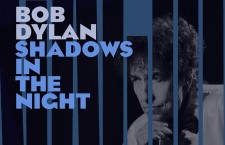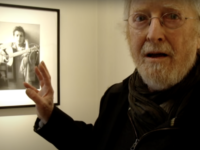The themes of separation on Blood on the Tracks, Bob Dylan’s heartbroken, endlessly revealing mid-1970s triumph, still pack an emotional jolt – whether you’ve suffered through a divorce or not. There’s nothing that specific, or that straight forward, about its conception.
Blood on the Tracks arrived on Jan. 20, 1975 as both sounding board and roadmap for anyone who has ever given something up, then warred with themselves about whether they were glad that it was gone – or they were, in fact, desperately, hopelessly lost without it. In many ways, though, I’m still untangling its history, and even its genesis.
Some of Bob Dylan’s worst efforts – Self Portrait, chief among them – came out during a period of marital bliss in advance of these sessions. (Ever enigmatic, maybe hoping it wouldn’t change him, Dylan had lied to a reporter just two days after his betrothal to Sara Lownds, saying he had no hope of having a family someday.) Instead, Dylan spent the next few years raising kids and lowering expectations, after a cycle accident that seemed much worse than it was. He finally emerged in 1974 with a huge album and tour alongside his most consistently interesting collaborators in the Band.
It was a signal that Dylan was ready to truly re-engage in his career, but also that something more personal was in play. Embedded right there on 1974’s Planet Waves was the song “Dirge,” in which he bitterly conflates love with weakness. Of course, Dylan being Dylan, he has neither confirmed nor denied what seems to be his follow-up album’s central theme of divorce – though he did, not long after Blood on the Tracks was released to rapturous reviews, admit that he never understood people’s fascination with pain.
And, make no mistake, Blood on the Tracks can be painful, even harrowing, tinged with more regret than “Dirge” allowed, and only rarely completely vituperative – as on “Idiot Wind.” (The same, of course, can’t be said for the resulting tour, as captured on the viscerally angry 1976 concert document Hard Rain.) Were you so inclined, the hard-eyed denouncements on “Idiot Wind” could be applied to the on-going scandal engulfing the Nixon presidency at the time of these sessions, but more generally, Blood on the Tracks has always felt like someone dealing with all of the different permutations of loss – sparked, at least in principal, by the disintegration of Bob Dylan’s marriage.
It remains, to me, weirdly fitting that an album so focused on estrangement, on misunderstandings and discord, would have its own similarly split narrative. Dylan initially gathered a group of crack studio musicians in New York, with Phil Ramone producing, to delve into these songs. Blood on the Tracks would, in a stinging omission, ultimately include sideman credits for Eric Weissberg and Deliverance – Dylan’s original backing group. The project was no doubt shaped in part by their contributions to “Meet Me in the Morning,” but that can hardly be described as a defining moment.
No, the heart and soul of the album will always be the five cuts Bob Dylan recorded months later, in a series of 11th-hour sessions back home in Minnesota. The legend has always been that he shared these dates with pick-up musicians, mere locals. But that’s something of an oversimplification, since drummer Bill Berg, bassist Billy Peterson and the engineer had all previously worked with Leo Kottke. As jazz guys, they knew how to make something out of nothing, how to wing it. And that’s exactly what happened, as Dylan arrived in Minneapolis around New Year’s Eve and began furiously recording new versions of already canned-up songs for an album that would ultimately see release just weeks later in January.
They started, perhaps appropriately, with the snarling “Idiot Wind,” returning Bob Dylan to the flinty propulsion of “Positively 4th Street” in an almost off-handed flourish. Recording would continue in this way, with everyone learning the songs on the spot, and then tearing through them. Later, Dylan would overdub organs, mandolin (doubling with Peter Ostroushko on “If You See Her, Say Hello”) and flamenco guitar (both on “If You See Her” and on “You’re a Big Girl Now”).
[SHOWS I’LL NEVER FORGET: On this singularly magical night, Bob Dylan once again proved he was no fan of history. And that’s why I’ve been a fan of his for so long.]
They pushed him, too, to record “Tangled Up in Blue” – then, as now, the album’s centerpiece – at a quicker pace than had Dylan’s initial New York band, which in turn nudged him to the very top of his voice. In reaching for those words, and for those feelings, Dylan gained a newfound sense of urgency. Dylan hadn’t approached, had rarely even broached, this kind of raw, emotional honesty since “Ballad in Plain D,” the 1964 exploration of his breakup with Suze Rotolo. Even at this thrillingly amped-up pace, though, Dylan remains in complete control of the narrative, speaking about adult things, about interior things. He’d learned to paint in the interim, and that seems to have played a concurrent role in helping Dylan spark up his muse.
“Lily, Rosemary and the Jack of Hearts” is a perfect example of these final sessions’ in-the-moment, jazz-influenced atmosphere. Clearly in the midst of a visceral, first-time experience, Bob Dylan’s sidemen seem to be reacting in real time to everything he does. “You’re a Big Girl” then dives to the bottom of self-pity’s depths, a brilliant set up for the catharsis of “Idiot Wind.” “If You See Her” has been called a grown-up version of “Girl of the North Country,” likely because she’s not so easily dismissed anymore.
Over what turned out to be just two nights, these quickly assembled sidemen would completely change the tone and tenor of Blood on the Tracks – something made clear as the original New York takes began to trickle out: “You’re a Big Girl Now” appeared on Biograph in 1985, while “Tangled Up in Blue,” “Idiot Wind” and “If You See Her, Say Hello” would finally see official release on The Bootleg Series, Vol. 1-3 in 1991.
[SOMETHING ELSE! REWIND: For all of the off-handed menace found in Bob Dylan’s ‘Tempest,’ for its many betrayals, the album offers commiserate moments of community, desire and grace.]
Yet, the guys back home were never given their proper due. Berg would later become an animator with Disney on films like Beauty and the Beast, Treasure Planet and Hercules. Chris Weber, a local guitar shop owner who brought a requested instrument for Dylan and ended up sitting in, could be found selling real estate.
This album, a transformational moment both for Bob Dylan and for his listeners, was defined by these largely anonymous players’ efforts. Blood on the Tracks simply wouldn’t have been as complex, as cinematic, without the later updates. The original “Idiot Wind” makes perhaps the best argument for the Minnesota sidemen: Back in New York, it’s simply too reserved, too controlled. Admittedly, those kind of quietly introspective performances were needed elsewhere – the utterly brilliant Ramone-produced “Simple Twist of Fate” has this empty-hearted numbness, rather than something so expected as sadness – but they wouldn’t have been enough to make Blood on the Tracks the acknowledged masterpiece that it is.
No, that took the addition of the frisky, improvisational stuff that happened at the unheralded Sound 80 Studios, then nestled hard by the Mississippi River at a corner on 27th Street in Minneapolis. Over these last four decades, I’ve come to appreciate it more every day.
- ‘Together Through Life’ Remains One of Bob Dylan’s Most Low Key, Organic LPs - April 15, 2024
- Why Joe Jackson’s Retro ‘Body and Soul’ Said So Much About His Future - March 14, 2024
- How Rudolph Stole the Show on ‘The Temptations Christmas Card’ - December 25, 2023




